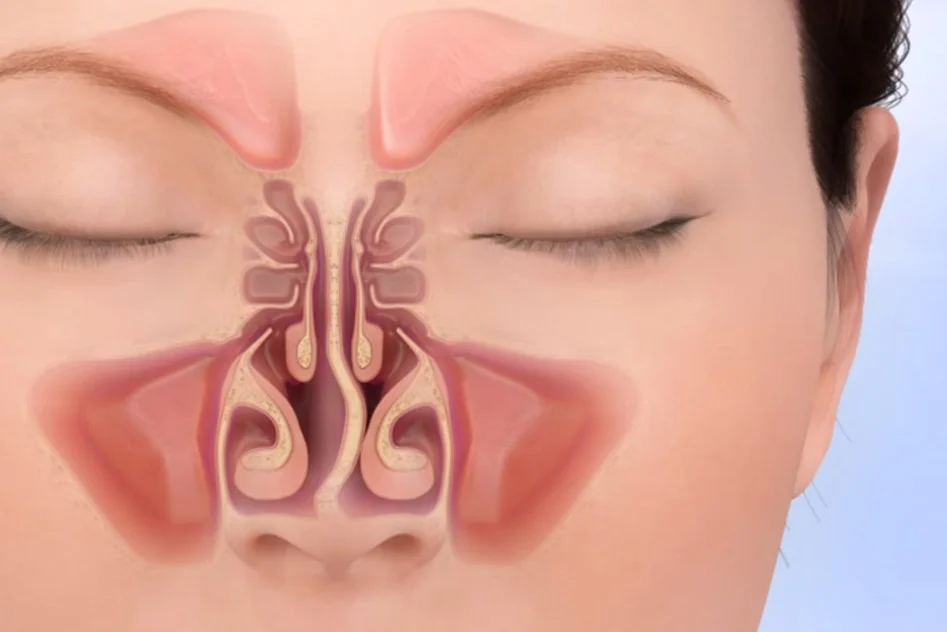
Septoplasty is a surgical procedure that is performed to correct a deviated septum. The septum is the wall of bone and cartilage that divides the nasal cavity into two separate chambers. When the septum is deviated, it can cause breathing difficulties, snoring, and other problems.
How it is performed
During the procedure, the surgeon will make an incision in the lining of the nose and lift it away from the septum. The deviated portion of the septum is then removed or repositioned, and the lining of the nose is placed back into its original position. In some cases, additional procedures such as turbinate reduction may be performed at the same time to improve breathing
Why is the surgery done
Septoplasty surgery is done to straighten the deviated septum, allowing for improved airflow through the nasal passages. This can alleviate the symptoms associated with a deviated septum and improve overall quality of life. When the septum is deviated, it can cause several problems, including:
- Nasal obstruction: A deviated septum can block one or both nasal passages, making it difficult to breathe through the nose. This can lead to snoring, sleep apnea, and other sleep-related disorders.
- Nasal congestion: A deviated septum can cause chronic nasal congestion, which can lead to headaches, facial pain, and sinus infections.
- Nosebleeds: A deviated septum can cause dryness and irritation of the nasal lining, leading to nosebleeds.
- Postnasal drip: A deviated septum can cause excess mucus to build up in the nasal passages, leading to postnasal drip and a sore throat.
- Facial pain: A deviated septum can cause pressure and pain in the face, particularly around the nose and forehead.
What to expect post surgery
Septoplasty is typically done on an outpatient basis, meaning that the patient can go home the same day as the surgery. The patient will usually be under general anesthesia or local anesthesia with sedation. After the procedure, the patient may experience some pain, swelling, and nasal congestion, but these symptoms can usually be managed with pain medication and nasal sprays.
Risks associated with the surgery
As with any surgical procedure, there are risks associated with septoplasty. Some of these risks include:
- Infection
- Bleeding
- Scarring.
- Perforation
- Changes in smell
Frequently Asked Questions
-
IS SEPTOPLASTY MAJOR SURGERY ?
NO,IT IS A MINOR SURGERY .IT HELPS IN OPENING UP NASAL PASSAGE.IMPROVES BREATHING.MANY PEOPLE WILL HAVE REDUCTION IN SNORING AND IMPROVES QUALITY OF SLEEP.
- DOES SEPTOPLASTY CHANGE SHAPE OF NOSE
NO SEPTOPLASTY ALONE DOESN’T CHANGE SHAPE OF NOSE . IT CONNECTS DEVIATED SEPTUM INTERNALLY.
- What are the SIDE EFFECTS of septoplasty
HEMORRHAGE , SEPTAL HEMATOMA , PERFORATION ,SYNECHIAE
- HOW LONG NASAL PACKS SHOULD BE KEPT
NOSE BLOCKED WITH NASAL PACKS FOR 24HR. LATER THEY ARE REMOVED .
- HOW PAINFUL IS DEVIATED SEPTUM SURGERY
NO IT IS NOT PAINFUL SURGERY.IT WILL BE DONE UNDER GENERAL ANESTHESIA
- HOW LONG IS SEPTOPLASTY RECOVERY
1-2 WEEKS
-
DOES SEPTOPLASTY WEAKEN NOSE
NO,ONLY DEVIATED PART OF THE SEPTUM IS REMOVED. CARTILAGINOUS PART OF SEPTUM ALONG THE NASAL DORSUM AND COLUMELLA IS RETAINED.SO SEPTUM DOESN’T COLLAPSE.
-
WILL SEPTOPLASTY CHANGE MY VOICE
NO IT DOES NOT CHANGE VOICE
-
IS SEPTOPLASTY PERMANENT
YES. SEPTUM ONCE CORRECTED WILL NOT DEVIATE UNLESS THERE IS AN INJURY
-
WILL MY NOSE LOOK STRAIGHT AFTER SEPTOPLASTY
RHINOPLASTY IS THE PROCEDURE ADVISED FOR STRAIGHTENING OF NOSE. SEPTOPLASTY IS AN INTERNAL PROCEDURE .IT DOES NOT CHANGE THE EXTERNAL SHAPE OF THE NOSE .SO THE EXTERNAL SHAPE OF THE NOSE WILL REMAIN SAME AFTER THE SURGERY.
-
WHAT HAPPENS IF YOU DON’T FIX A DEVIATED SEPTUM
An untreated deviated septum can cause obstructive sleep apnea syndrome. Sleep apnea can lead to high blood pressure, cardiac hypertrophy, heart attacks, diabetes and headaches.
-
WHAT IS BEST SLEEP POSITION FOR A DEVIATED SEPTUM
Sleeping to one side will help in better airflow through nose.lying down on the back will worsen the airflow
- DOES SEPTOPLASTY CHANGE SHAPE OF NOSE
